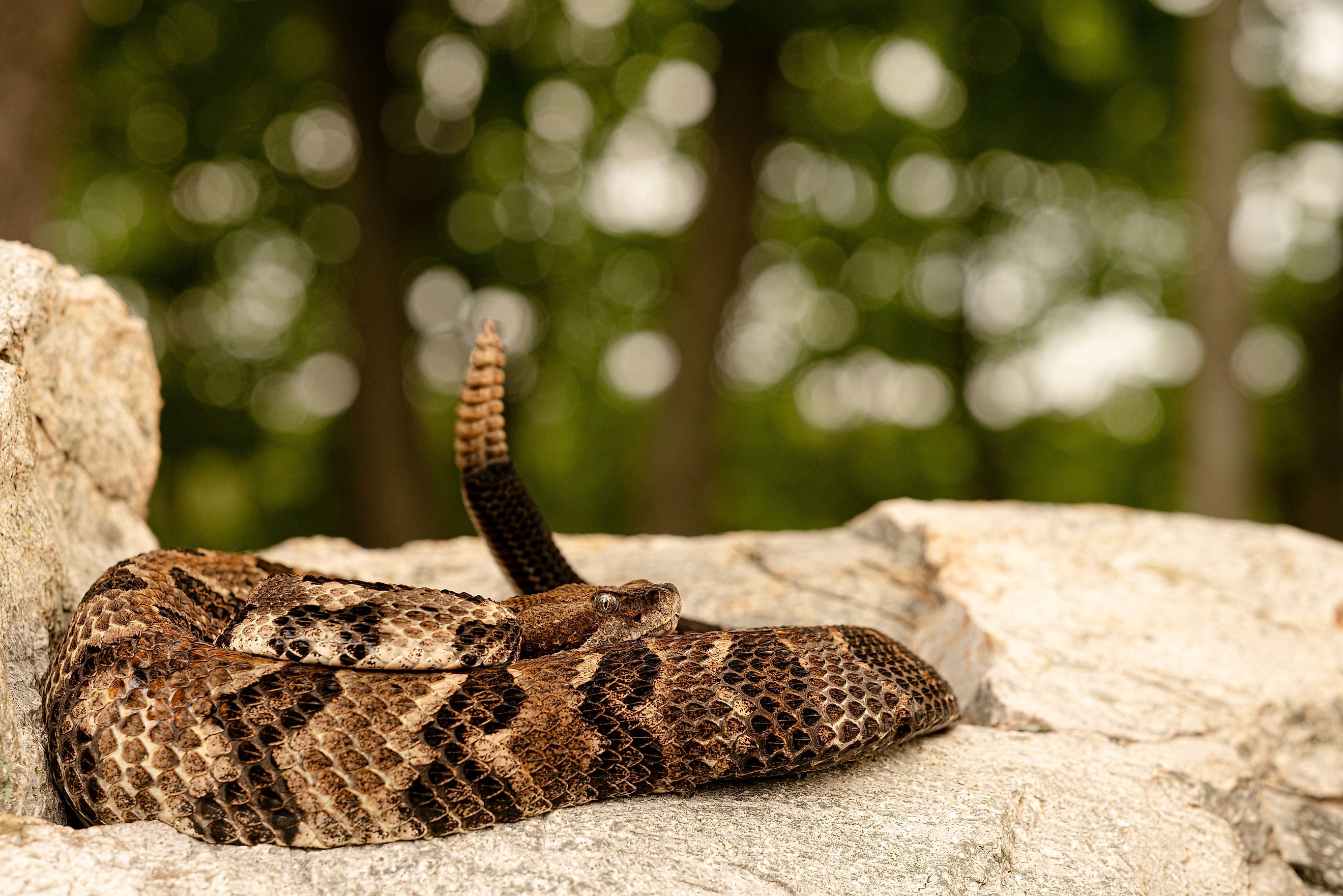
The Venomous Snakes Of Arkansas
As a warm and wild state with a variety of biomes, Arkansas is home to approximately 40 species of snakes. Only six of those are conventionally venomous. We say "conventionally" because some Arkansas species, like the Eastern hognose snake (Heterodon platirhinos) and common garter snake (Thamnophis sirtalis), produce a modicum of venom to subdue small prey, but it is harmless to non-allergic humans. Venom from the big six AR snakes can outright kill. However, as you will soon learn, your chance of snakebite death is infinitesimal. Behold the deadly but misunderstood snakes of Arkansas.
Texas Coral Snake
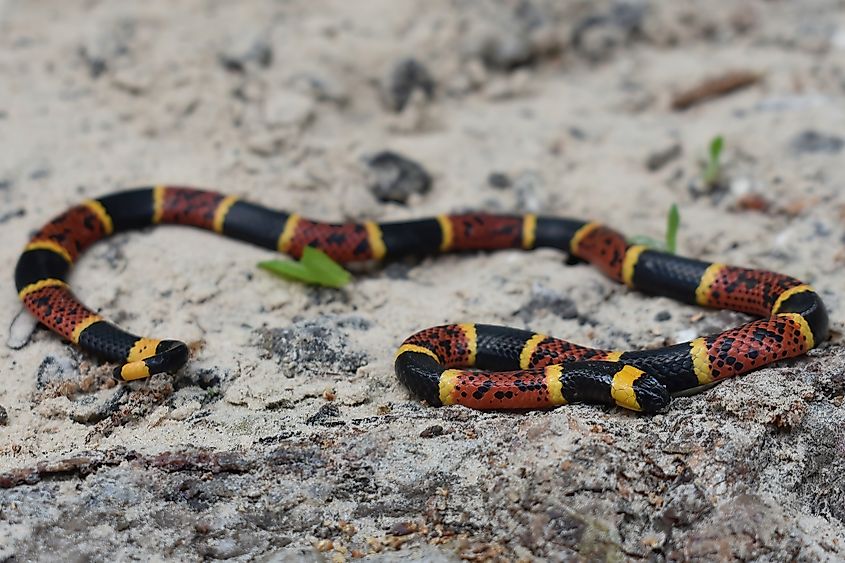
Texas Coral Snake (Micrurus tener).
Let's begin with the most colorful snake in Arkansas: the Texas coral snake (Micrurus tener), whose red, yellow, and black bands have enchanted and warned residents for centuries. As the saying goes, "Red touch yellow, kill a fellow; red touch black, venom lack." Red very much touches yellow in the Texas coral snake's case, but its small body (~2 feet), even smaller fangs (1/8 of an inch), and shy temperament (lives under logs and leaf litter), make envenomations rare and deaths rarer. No one is known to have died from a Texas coral snake. In Arkansas, where it inhabits just a few southwestern counties, the snake is even less of a threat. Still, coral snake venom is toxic and antivenin is underproduced due to lack of demand. Thankfully, its bands are one of nature's most effective warning labels.
Copperhead
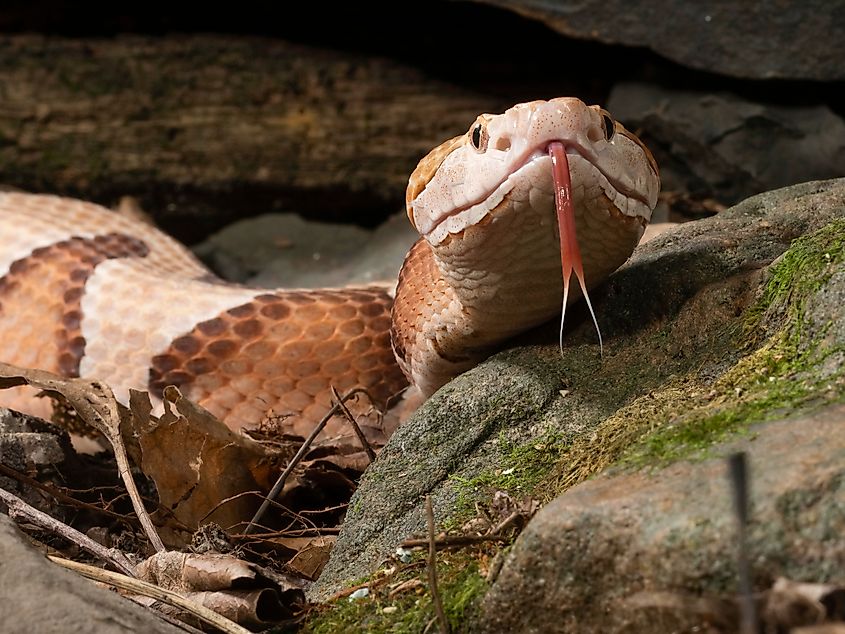
If the coral snake is nature's warning label, the copperhead (Agkistrodon contortrix) is nature's camouflaged assassin. This pit viper comes in earth tones and, unlike a rattlesnake or coral snake, relies on striking for defense rather than striking sounds and colors. When faced with a possible threat, it freezes in its pile of leaves or wood chips and strikes when the threat gets close, resulting in bites on unsuspecting ankles. Though the copperhead is one of America's bitiest venomous snakes, it is one of the least toxic. Arkansas has only one subspecies of copperhead, the Southern copperhead (Agkistrodon contortrix contortrix), which has been responsible for zero documented fatalities in the state. While walking through basically any wooded area in Arkansas, watch your step but don't be paranoid. The copperhead's venom is weak enough that antivenin is not often required. But it is often ideal since the bite does pack a painful and potentially necrotizing punch.
Cottonmouth
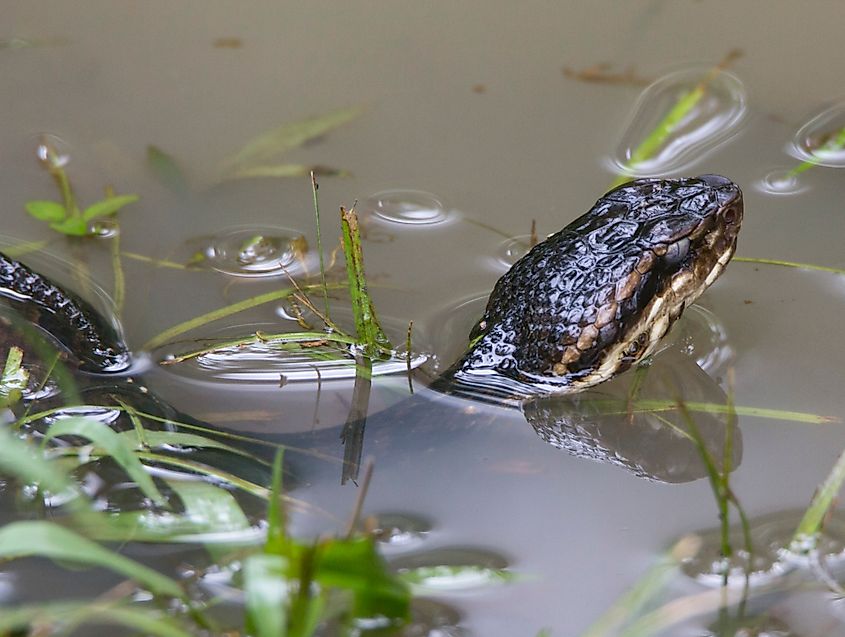
Cottonmouth Snake Agkistrodon piscivorus.
The cottonmouth (Agkistrodon piscivorus) is another weak-venomed but strong-willed Arkansas pit viper. It distinguishes itself from other vipers with its semi-aquatic lifestyle and cottonlike mouth-tissue, which it presents as a scare tactic. Arkansans can watch this sizeable snake swim through water and prey on fish and frogs without becoming its next victim. Still keep your distance, though. Cottonmouth venom, like that of other vipers, is cytotoxic, which means that it targets flesh. Compare that with the neurotoxic venom of the coral snake, which targets the nervous system. Cottonmouth bites can thus cause extreme pain, swelling, tissue damage, and, rarely but not as rare as bites from the coral snake, death. Yet most people would rather be bitten by a cottonmouth than a maraca-mimicing American icon.
Pygmy Rattlesnake
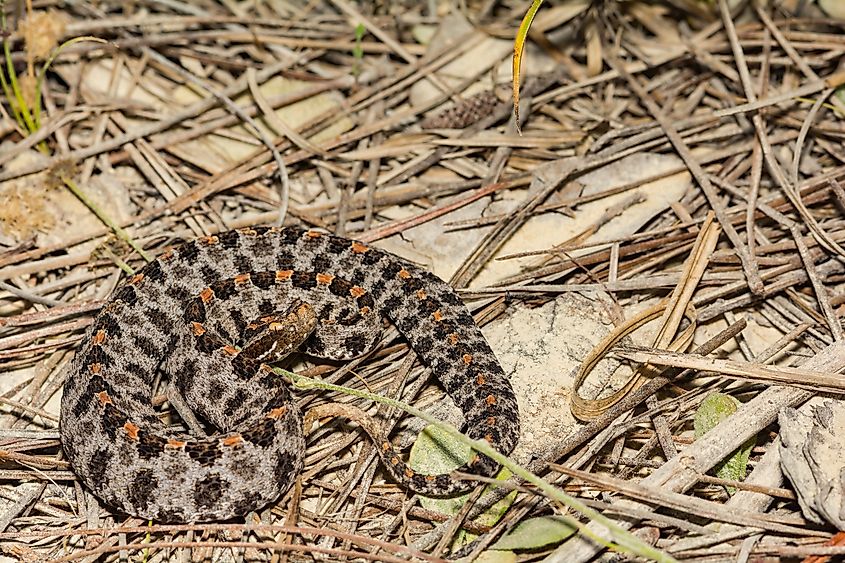
Like almost every US state, Arkansas has rattlesnakes. In fact, according to our research, the only fatal Arkansas snakebites where the snakes were identified were from rattlesnakes. However, it's unlikely that any of the deaths were caused by the pygmy rattlesnake (Sistrurus miliarius). This pint-sized pit viper averages a foot and a half in length so it yields far less venom than its stocky cousins. Those couple dozen milligrams of venom are good for killing mice and lizards but does little longterm harm to humans. Yet, given its cytotoxicity, the bite can be quite bloody and painful. Before biting, the pygmy rattlesnake typically warns with a rattle that, due to its size, may be hard to hear. Keep your eyes and ears peeled for this wee rattler while hiking the northern highlands and southern lowlands of Arkansas.
Timber Rattlesnake
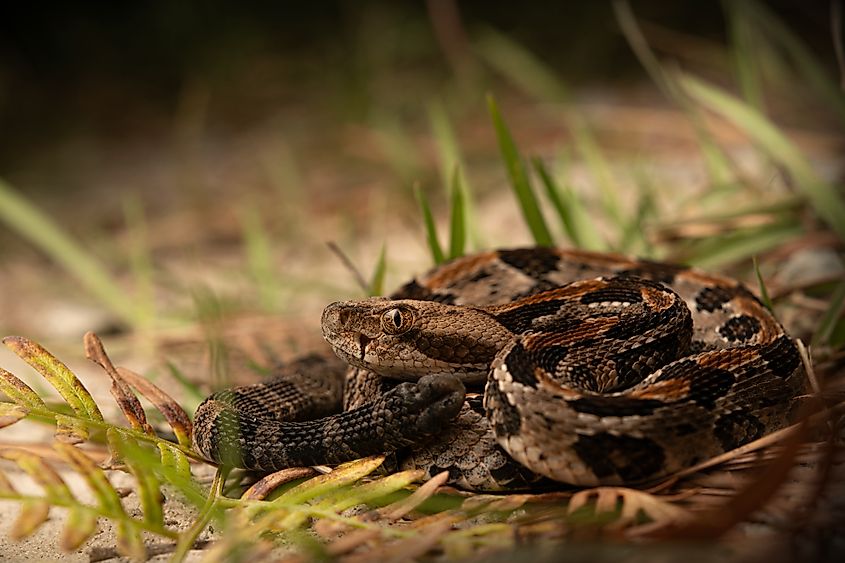
True to its name, the timber rattlesnake (Crotalus horridus) prefers forests but also lives in fields, hills, and rocky outcrops. Capable of reaching five feet in length and injecting large quantities of potent venom, it is one of the most dangerous snakes in Arkansas. Also raising its threat level is its wide range; the timber rattlesnake occurs across the state and is often encountered by hikers. Thus, a probable majority of AR rattlesnake bites can be attributed to the timber rattlesnake. However, its large, loud rattle should save those who did not surprise the reptile or ignore its warning. Many bites are provoked by people trying to kill or handle rattlesnakes.
Western Diamondback Rattlesnake
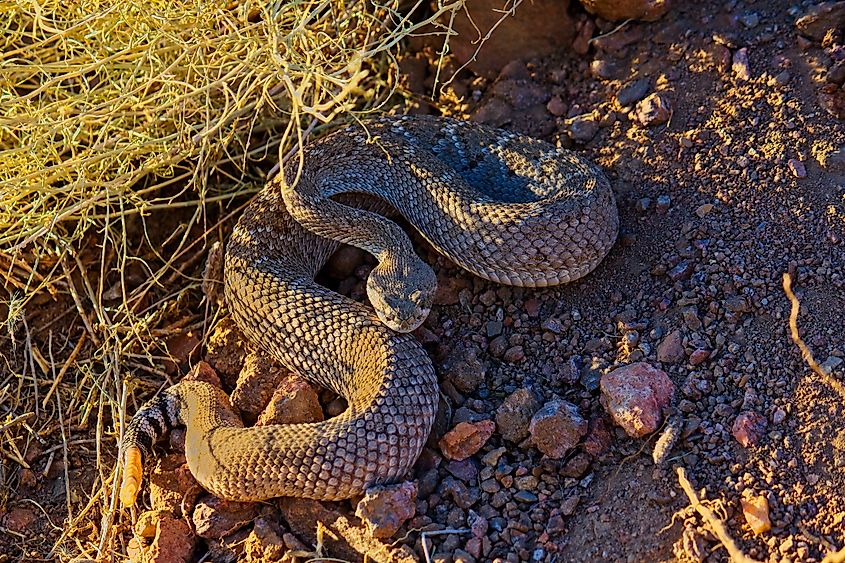
The Western diamondback rattlesnake (Crotalus atrox) is the second-largest venomous snake species in America and the largest in Arkansas. It can be 7 feet long and weigh 15 pounds. While not as potent as the Timber rattler, the Western diamondback can inject three times as much venom, making it arguably the most dangerous serpent in the state. Though species specificity is scant in Arkansas snakebite records, the Western diamondback is likely responsible for some fatalities. In saying that, no one is known to have died from a native Arkansas snake since the 1960s. Moreover, the University of Arkansas Division of Agriculture considered bees, wasps, and lightning strikes deadlier than snakes. If you come across a rattler in Arkansas, stop, stay out of strike range (2/3rd of its body length), and admire something that is less lethal.
Six species of significantly venomous snakes inhabit Arkansas, ranging from the widespread copperhead to the waterlogged cottonmouth to the subterranean coral snake to three diverse kinds of rattlesnakes. All pose a threat to humans, but fatalities are so rare that being struck by lightning should be more worrisome than being struck by a snake. Still, stay vigilante in snake country (which is most of the state) by dressing appropriately, watching your step, and seeking immediate medical attention if bitten.











